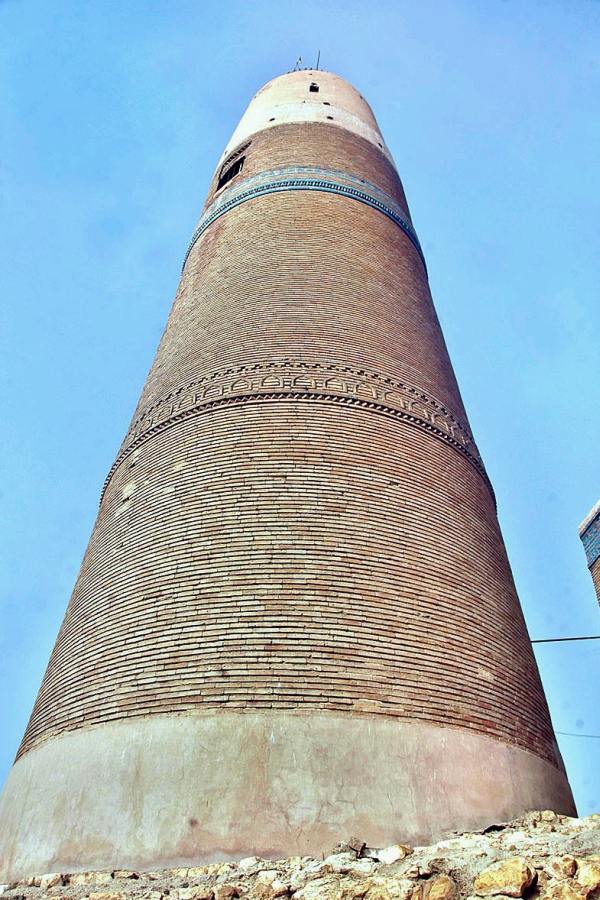

Uncountable stairs of Masoom shah Minerat

Hello,
The name is (Minerat of Masoom Shah)
The architecture of this tower is probably ungainly but there are few details that make it unique in Pakistan. The number 84 is significant with the architecture here as the tower is 84 ft (26 meters) high. One source claims the height of the minar as 31 meter. The number of steps to reach the top of the tower is 84. The circumference of the base of tower is also 84 feet.
The tower’s historical significance arises from the fact that it was built in 1605-1610 AD. In one of the references I read, the year of completion for the tower is given as 1607 A.D. Even with going with the conservative estimate of 1610 AD means the next year Tower of Masoom will complete 400 years of it existence.
It was built by Masoom Shah of Bukkur (an island on River Indus between Sukkur and Rohri). Masoom Shah was the Governer of the area in times of Mughal Emperor Akbar. The tower was built with the purpose of keeping a watch on the area.
On top of the tower is an observation balcony which is now covered with iron railing. At one time it became nototrious for suicidal people flinging themselves to death below. If you look carefully at the top of the tower in our title photo, you can see this iron railing on the viewing balcony. When was this iron cage built? I couldn’t research the date for sure but the last photo of this post below (circa 1896) shows this cage present, which means the iron cage was present atleast in the British era.
Next to the tower is a pavilion made of sandstone which has graves of Masoom Shah and his family. The sacrophagi are carved in the tradition of the Chaukundi tombs (near Thatta, Sindh). Photo to the left shows the view of these tombs from the top of the minar-e-Masoomi.

Cousens wrote in The Antiquities of Sind, "The most conspicuous feature in the landscape is the tall minar of Mir Ma’sum…Its dropsical proportions, and uncertain undulating outline suggest putty or dough as the material of its construction rather than brick and mortar. Its lantern top, surrounded with an iron cage, make it look more like an antiquated lighthouse perambulating through the country…It rises to a height of about a hundred feet, is eighty-four feet in circumference at the base, and is somewhat out of the perpendicular…Under the shadow of the minar rest the remains of Mir Muhammad Ma’sum Shah, his father, and other members of his family, the Ma’sumi Sayyids…Over the graves are open canopies supported on square, flat and octagonal stone pillars whose shafts are covered with Persian writing in relief and other ornamental tracery…Between Mir Ma’sum’s grave and the base of the minaret is a domed octagonal building, apparently intended as a rest-house, which was built in A.H. 1004 (Plate LXXVIII) [this image]. It has four arched entrances, those on the east and west having a cut-stone ornamental balconied window above each of them. It is built of brick and is decorated with coloured tiles.”
LOCATION: Sukkur City, Sindh Pakistan

No comments:
Post a Comment